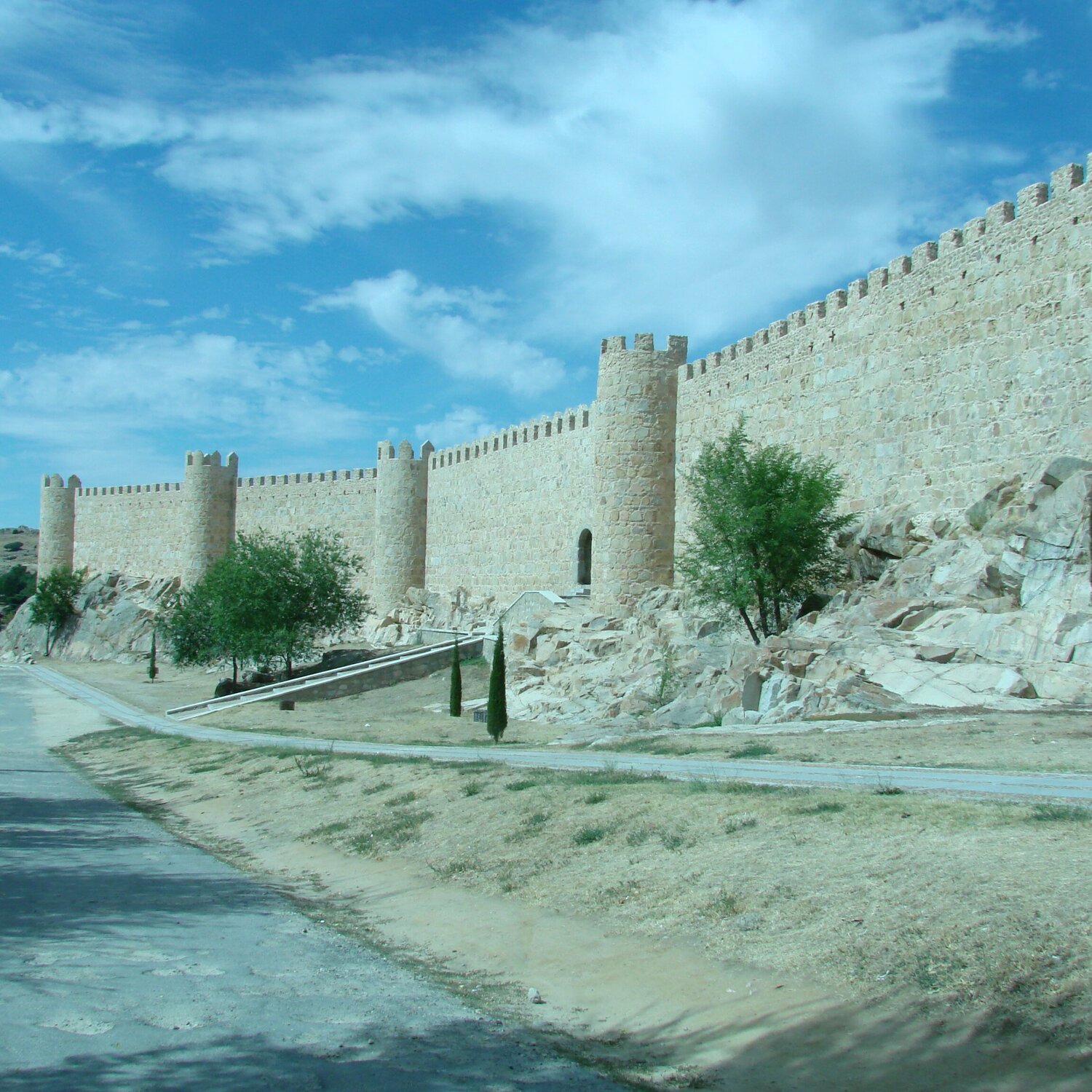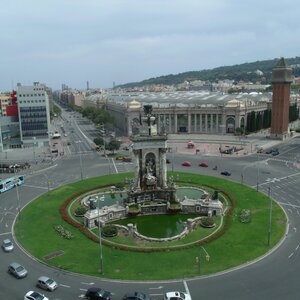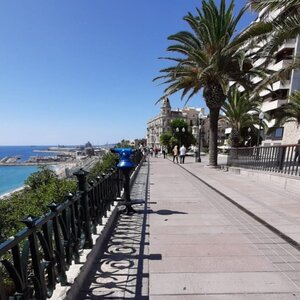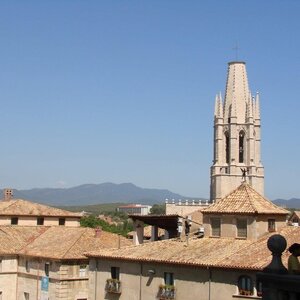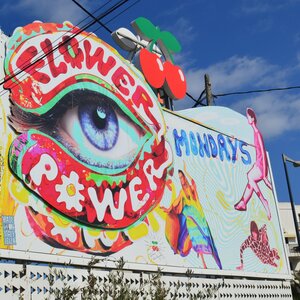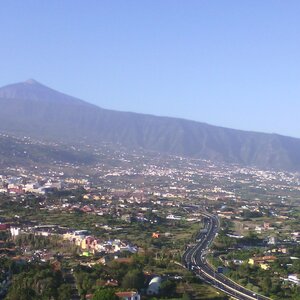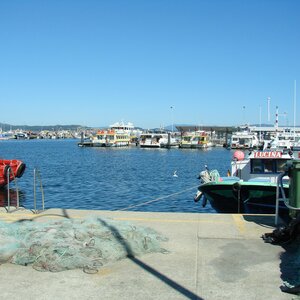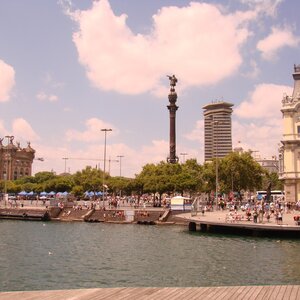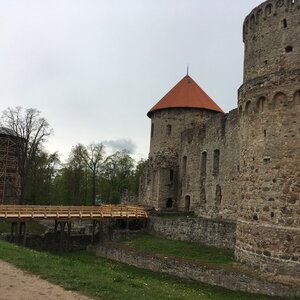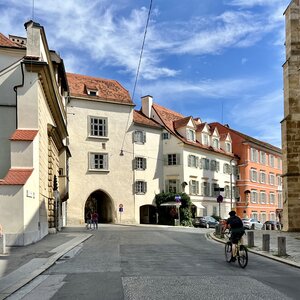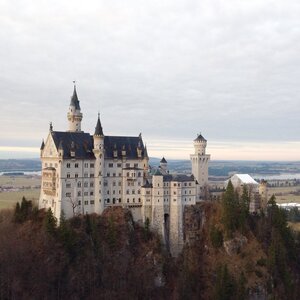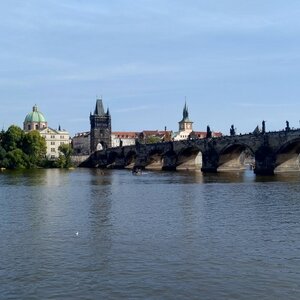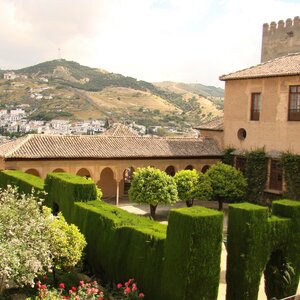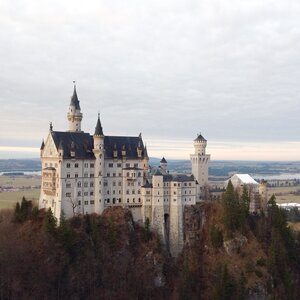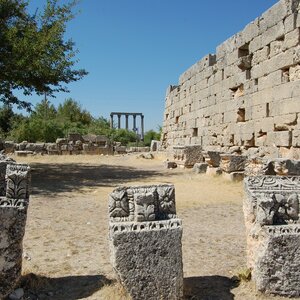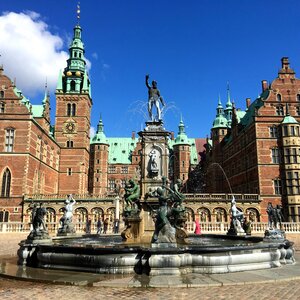Along with Toledo and Segovia, Avila is one of the most popular destinations for day trips from Madrid. If you have a free day in the capital of the Spanish kingdom, check out Avila. One day is enough for a walking tour of the main sights. When you arrive in Avila, go straight to the historical center — everything interesting and impressive is located here, and on the way stop by the tourist center for free maps of the city.
- Avila Tourist Center (oficina de turismo). Opening hours: in summer from 9:00 to 20:00, in winter from 9:00 to 18:00.
Fortress wall (la muralla de Ávila)
Avila’s most famous landmark is the medieval city wall, which completely surrounds the old town. The average thickness of the wall is 3 meters, and the length of the entire fortification is 2.5 kilometers. The construction of the wall began back in the IX century and it is perfectly preserved to this day. The Avila Wall is the oldest fortification in Europe. The city fortification has 87 crenellated towers and 9 gates.
You can climb and walk the long way up the walls of Avila from the Puerta de Carnicerías gate. This is where you will find the tourist center where you can buy entrance tickets to the historic walled complex of Avila.
- Admission: 5 € for adults, 3.5 € for children. On Tuesdays from 14:00 to 16:00 you can get in for free, unless it is a weekend or a public holiday.
- Working mode: daily from 10:00 to 20:00 — 21:00. From November to March — until 18:00, Monday — day off
- Site of the Avila fortress wall complex
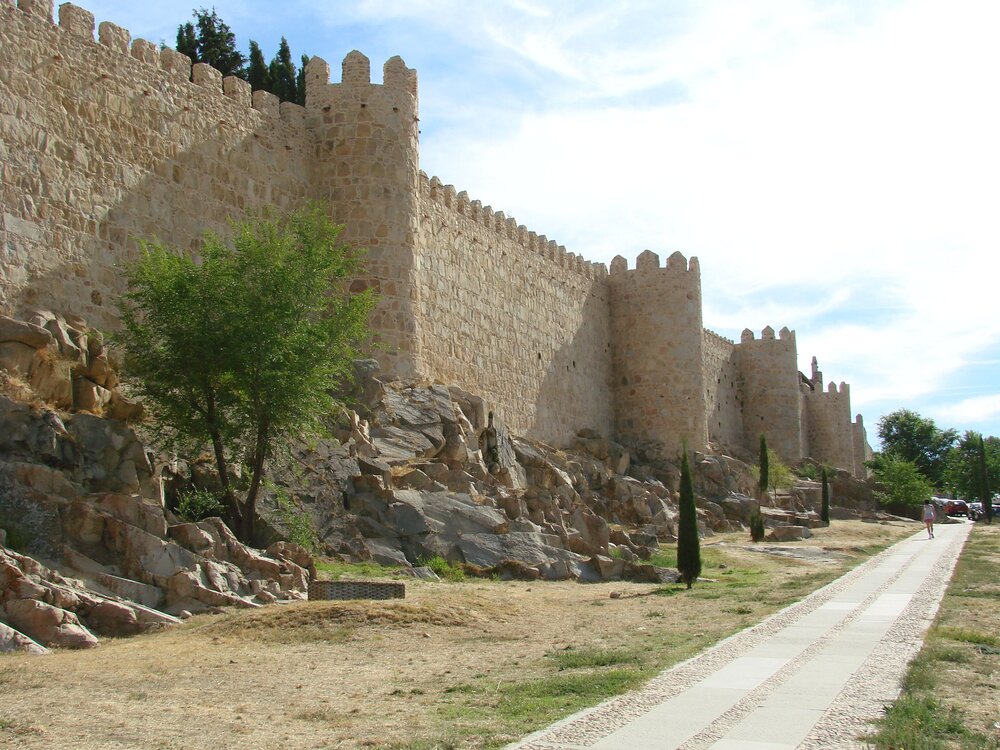
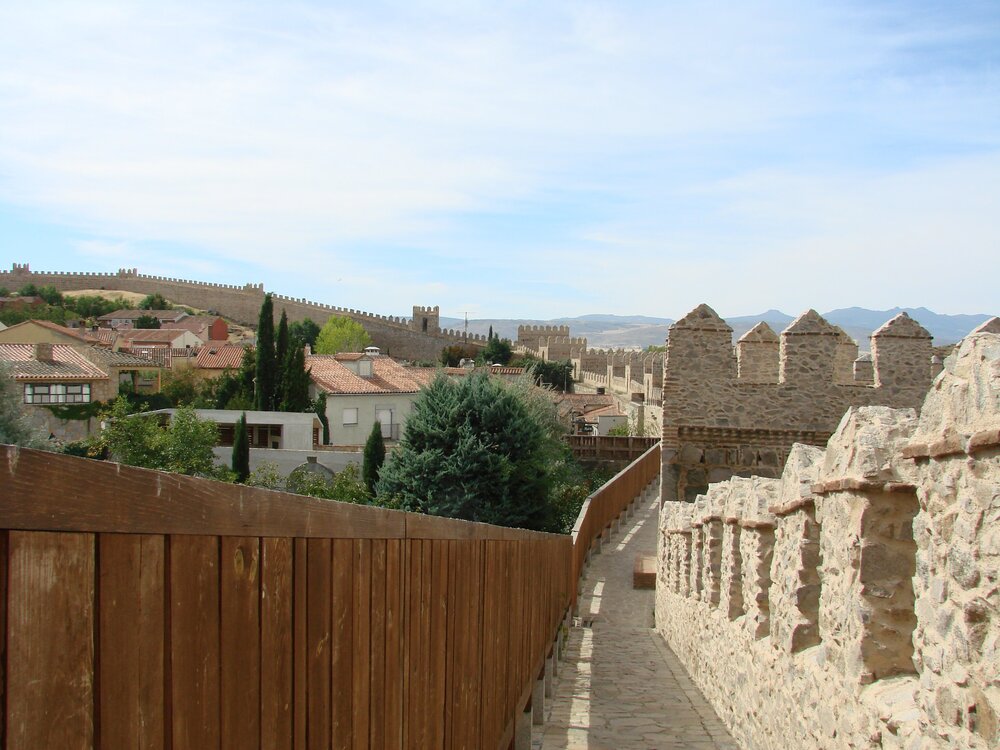
Cathedral (Catedral de Ávila)
The Cathedral of Avila, the first Gothic cathedral in Spain, was built in honor of Saint Salvador. The construction of this grandiose structure began as early as the eleventh century and lasted for more than three centuries. The cathedral was part of the defensive structures: it is built in such a way that one of its walls is part of the fortress wall.
The cathedral is guarded by several stone lions that surround its entrance. In the cathedral square are several small Renaissance palaces, now occupied by hotels.
- Tickets cost: 6 € for adults, 4,5 € from 12 to 18 years old and students up to 25 years old, children under 12 years old are free.
- Open: no weekends, but opening hours vary depending on the season. Check the cathedral’s website before traveling.
- Avila Cathedral website
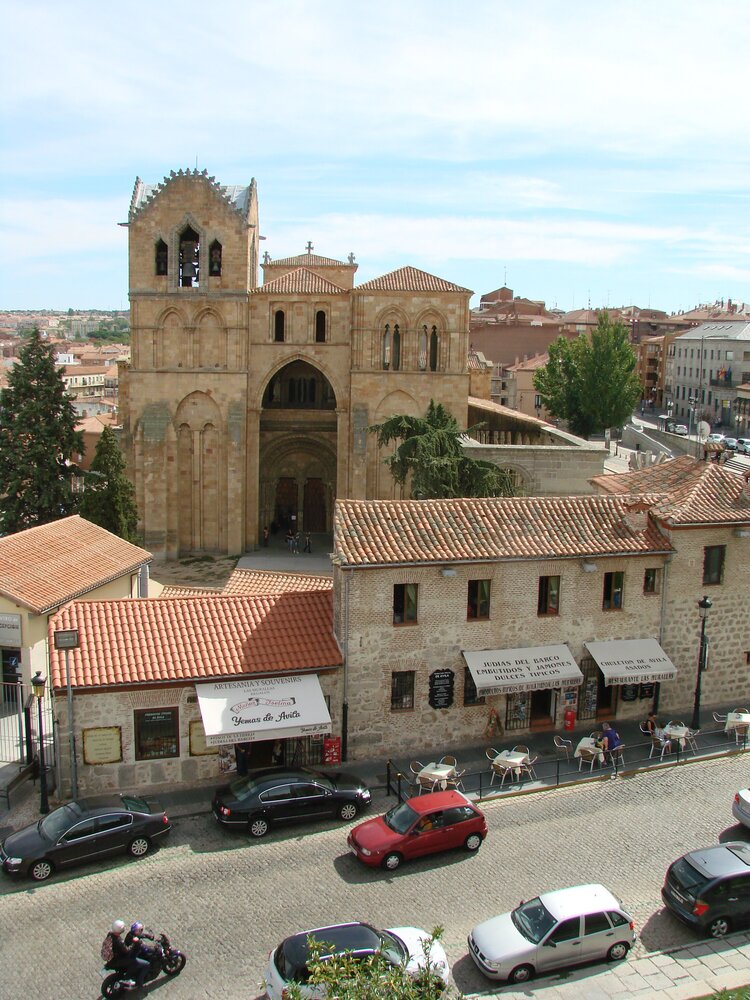
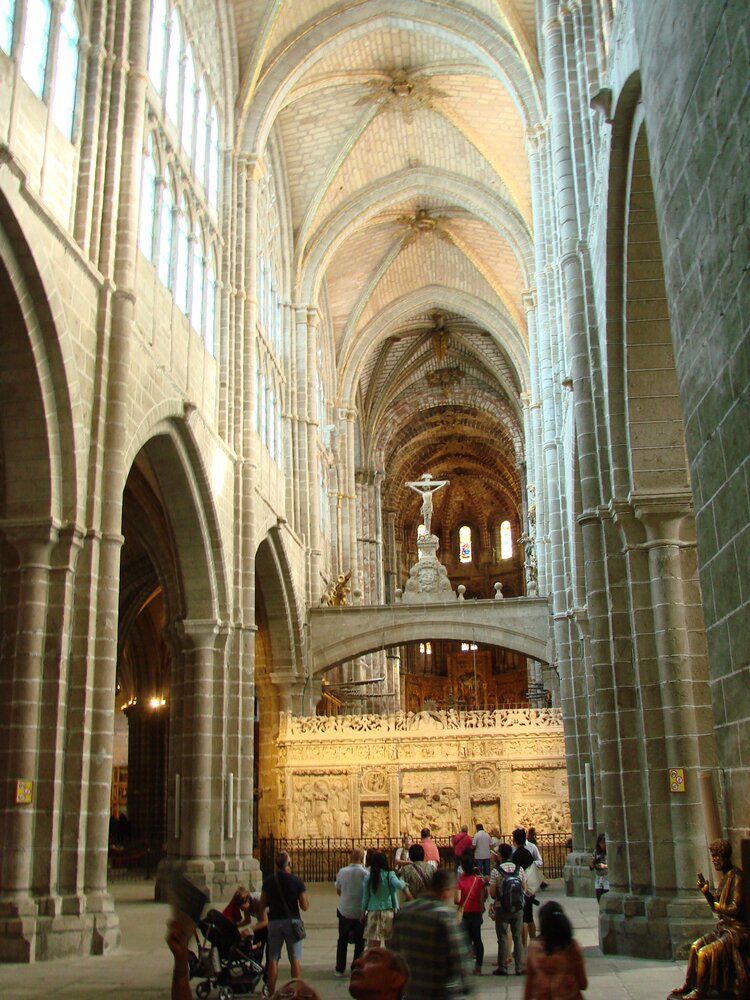
Plaza del Mercado Chico (Plaza del Mercado Chico)
This square in front of the town hall hosts periodic festivals and a weekly Friday market. The first floors of the houses are occupied by cozy cafes, restaurants and pastry shops. Here you can try traditional Avila dishes: beef steak, roast lamb or pig, veal with beans and a cake made of egg yolks mixed with sugar.
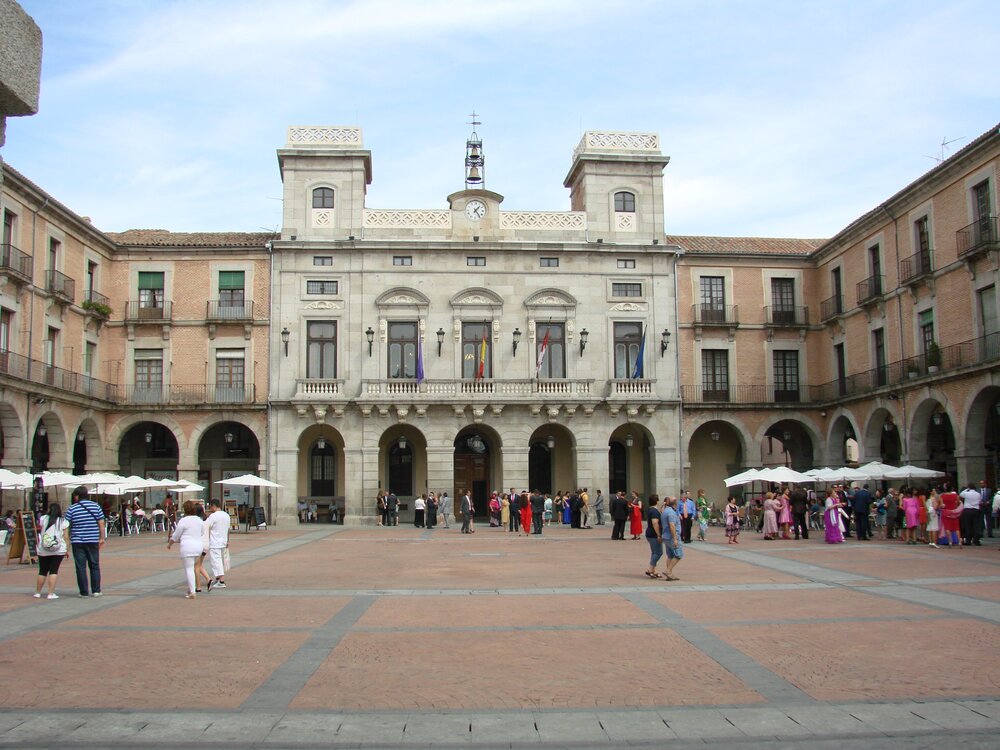
Basílica de San Vicente (Basilica of St. Vincent)
This is the second largest and most important temple of Avila was built in the XII–XIV centuries. The building was built in Romanesque style, in the form of a Latin cross. Since 1923 the church has been a national architectural monument of Spain.
- Working hours: from 10:00 to 18:30. From November to March — break from 13:30 to 16:00.
- Admission: 2,5 € for adults, 2,2 € for children from 12 years old.
- St. Vincent Basilica website
Convento y Museo de Santa Teresa (Convent and Museum of Santa Teresa)
The city of Avila is firmly associated with the name of St. Teresa of Avila, who was born here. St. Teresa is considered the patroness of Spain, one of the most revered Saints and is ranked among the Teachers of the Catholic Church, which means how significant her contribution to the development and spread of Catholicism was. She reformed the Carmelite monastic order and was the first Spanish writer, with her books translated into many languages around the world.
In the old town there is a functioning church at the Carmelite monastery of St. Teresa. It was built in the 17th century on the site of the house where Teresa, daughter of a wealthy noble family, was born and raised. This convent is still active today, so the only things that are accessible for a visit are the building from the outside, the baroque chapel of the church — the immediate place of Teresa’s birth, and the Museum of Santa Teresa, where the relics of the Saint are kept.
- Museum opening hours: daily, except Mondays, from 10:00. Closing hours are variable.
- Admission: free of charge.
- Santa Teresa Museum website
- St. Therese Convent website
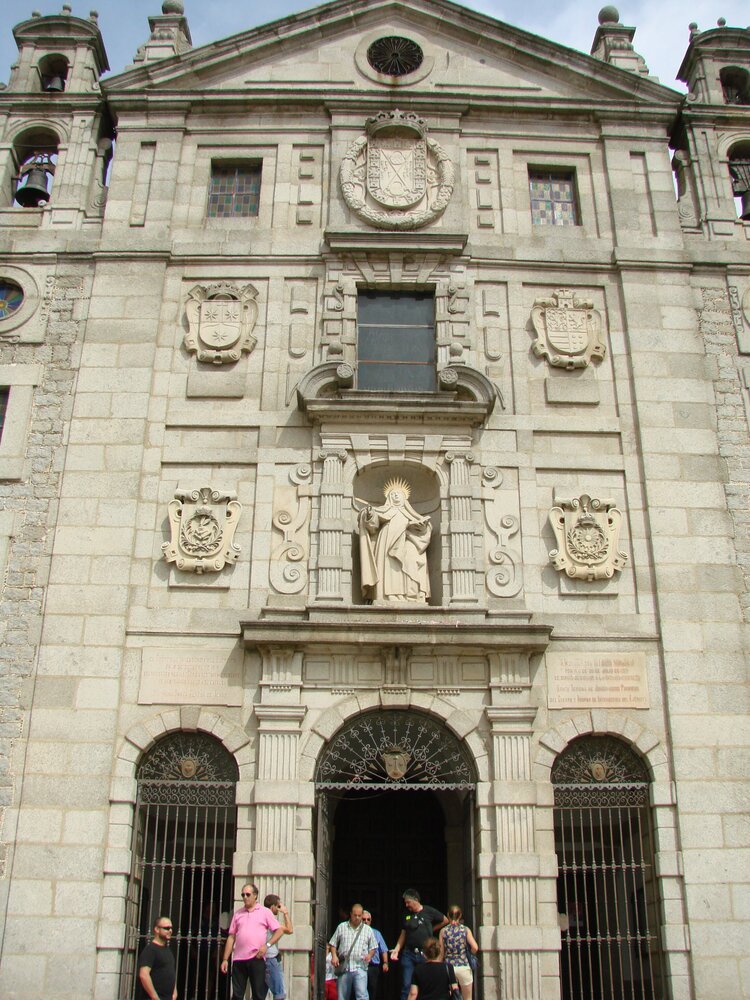
Monastery of the Incarnation (Monasterio de la Encarnación)
Teresa escaped to this convent when she was 20 years old and lived here for 30 years. The convent was founded in the late 15th century and was considered the richest and most influential in Avila. It was here that Teresa was visited by mystical visions and where she wrote several books. From here, after receiving permission from the Pope, she set out to found new Carmelite monasteries. The rooms of the monastery recreate the life of the times of the Saint and display her relics. In 1983, the monastery was recognized as a national treasure of Spain.
- Mode of operation: daily from 9:30—10:00 to 13:30 and from 16:00 to 18:00—19:00.
- Admission: 2 €.
Walk around the fortress walls (el Paseo del Rastro)
Just outside the fortress walls are gardens and a small park (Jardin del Rastro) with an observation deck (Mirador). From here you can enjoy excellent views of the Adaja River and the Sierra de Gredos Mountains. Here you can also see the monument «The Road of the Castilian Language».
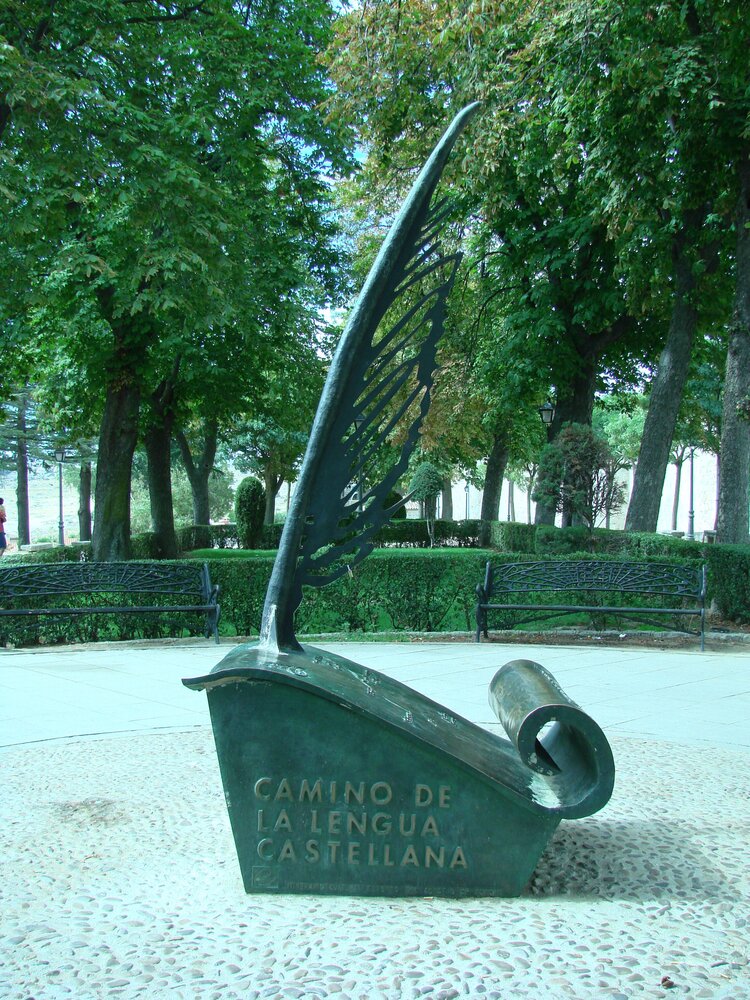
San Pedro Church (Iglesia de San Pedro)
This ancient Romanesque church dates back to the 12th century and is located outside the fortress walls, opposite the Alcázar gate. The Church of San Pedro is the largest Romanesque church and one of the city’s grandest temples. Inside it houses an ancient organ and a rich gilded altar.
- The mode of operation is Thursday and Friday from 18:00 to 20:00, Saturday from 11:00 to 14:00 and from 16:00 to 18:00.
- Admission: 1,5 €.

Tourist train (Tren turistico Murallito)
You can walk through the entire historic center of Avila or take the tourist train. The route starts at Plaza de Santa Teresa and passes the main sights.
- Mode of operation: from 10:00 to 00:00. The excursion route takes 35 minutes.
- Tickets: 6,5 € for adults, 4,8 € for children, night ticket 9 €.
- Avila Tourist Train website
How to get to Avila
Avila is located 110 kilometers from Madrid. You can get there from the capital of Spain by Avanza Grupo bus or RENFE train. In both cases, the trip will take 1.5 — 2 hours.
- Train or bus ticket from 9 €.

